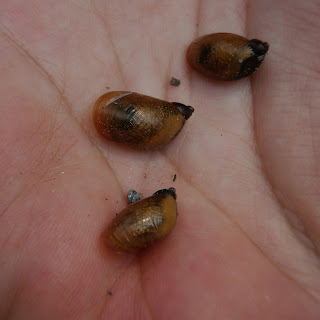


7.18.11
Thunder was rumbling and light was fast fading by the time I made it to the site of these little Spotted Wintergreen this morning. If you saw the pictures of Pipsissewa which were posted recently, you will notice the similarity of these members of the Wintergreen family.
Common polypody, the underside of whose fertile frond is pictured at upper left, were growing in abundance in a thin layer of moss over a granite boulder. To contrast, is a fertile frond of an Ebony Spleenwort which was growing in rocky woods. The shape and placement of the sori (capsules that hold spores) on the underside of the blade are important to identification of ferns.













